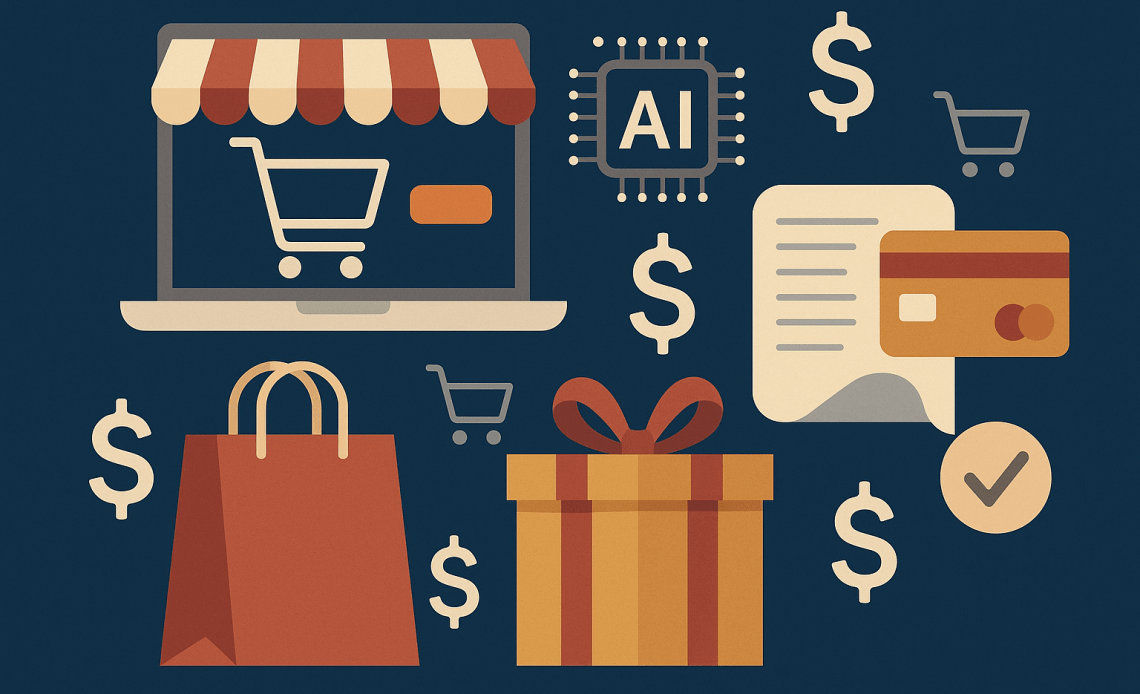Online shoppers in the US are expected to spend $253.4 billion this November and December, a 5.3% rise from last year, according to Adobe Inc.
But this holiday season’s growth story is not just about how much consumers are spending — it’s about how they are spending.
Artificial intelligence, social media discovery, and flexible payment options are shaping the most digitised festive shopping period yet, as consumers adapt to tighter budgets and evolving retail technology.
Flexible payments offset slowing growth
Adobe’s forecast marks a slowdown from 2024’s 8.7% surge, reflecting the combined impact of higher prices linked to tariffs and a cooling labour market.
Despite that moderation, one key area is growing twice as fast as overall online spending: buy-now-pay-later (BNPL) transactions.
Adobe expects BNPL purchases to total $20.2 billion during the 2025 holiday season — an 11% increase from a year ago.
These instalment-based options, offered by major retailers such as Amazon and Walmart through fintech partners including Affirm Holdings and Klarna Group, are gaining popularity among younger consumers and those managing limited credit.
The trend highlights how digital financing is cushioning the impact of economic pressure, enabling shoppers to spread out payments during major discount periods like Black Friday and Cyber Monday.
Analysts say that flexible checkout options are particularly attractive to cost-conscious buyers who might otherwise pull back from discretionary purchases.
AI tools shape discovery and decision-making
Technology is also influencing what consumers buy and how they find it.
Adobe notes a rising reliance on AI-driven search tools and chatbots to recommend products, especially in categories like electronics, toys, and jewellery.
Shoppers who visit retail websites through AI-powered channels reportedly spend more time browsing and exploring than those referred via advertisements.
Social media influencers continue to play a central role in product discovery, particularly on platforms like TikTok and Instagram.
Their ability to showcase discounts and limited-edition products during flash sales helps drive impulse buying behaviour.
Retailers are expected to boost AI integration in online storefronts this season, using recommendation engines to enhance user experience and optimise conversion rates.
Economic strain shapes shopping patterns
While technology fuels convenience, the broader economic backdrop remains mixed.
A September survey by PricewaterhouseCoopers found that many consumers plan to trim holiday spending due to tariff-related price rises and job market uncertainty.
The same report revealed a shift towards prioritising value over luxury, with shoppers seeking practical gifts and discounted bundles instead of premium brands.
For retailers, this means balancing deep discounts with profit margins in an environment where shipping and labour costs remain elevated.
E-commerce platforms are also investing in predictive inventory systems to manage fluctuating demand, aiming to prevent the stockouts that plagued earlier post-pandemic shopping seasons.
The digital holiday rush accelerates
The overall shift towards online shopping is now firmly entrenched.
Adobe’s data, drawn from sales of more than 100 million products across US retail websites, suggests that digital spending this year could account for an even larger share of total holiday retail activity than in 2024.
The continued expansion of BNPL options, coupled with AI-driven recommendations and influencer-led discovery, signals a new phase in consumer behaviour — one where data, technology, and flexibility define how Americans shop for the holidays.
As the festive period approaches, major e-commerce players are expected to focus on personalisation, transparency, and faster fulfilment to retain customer loyalty in a competitive market increasingly shaped by algorithms and affordability.
The post US holiday spending to reach $253B as AI, BNPL reshape shopping, Adobe forecasts appeared first on Invezz







